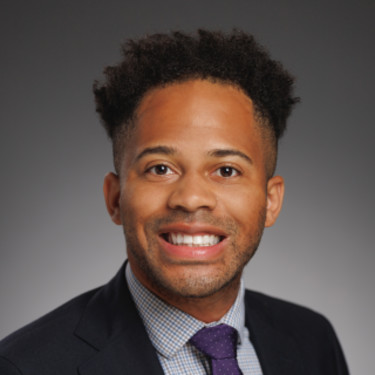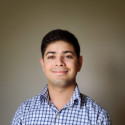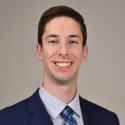During my medical school's pre-clinical years, I entered the hospital on rare occasions, lifting my head out of the books and into the reality of medical practice. One day, I was walking into the ER, following my attending. My classmates and I were wearing white coats, still pristine and freshly pressed, our pockets filled with notebooks and pens, hoping to hold onto every piece of information. As we walked past the computer station, our sweaty palms clutched medical instruments, still shiny from being used only for practice. My classmates and I followed each other into the cramped room and lined up, shoulder to shoulder, in a semi-circle around the bed. Finally looking up to notice the patient, I was taken aback — the patient before me looked just like a woman who I had painted in the art studio years ago. As my former life as an artist collided with my present, I couldn't help but wonder if she was the same person.
Years ago, I’d peered over the top of my canvas at what could have been this woman, seated on a pedestal, exposed from every angle. I was accompanied by eight other artists, forming a circle around her. I saw her, all of her, unclothed and vulnerable, seated facing toward me. I noted the undulations of her skin, curves weighty and full, providing beautiful shadows that I didn't want to undo. Each fold in her flesh asked more of my paintbrush, adding intrigue and provoking curiosity about her form. Through painting this woman's figure, I forged a connection to her body so strong that I couldn't forget her. I felt close to her. She gave us the privilege of sharing space, of seeing her.
In the studio, we had ample room between our easels, music playing softly in the background. In the hospital, we were so cramped that I could hear my classmates' quick heartbeats and fast, shallow breathing. The patient before me wasn't sitting comfortably on a pedestal. Instead, she was draped in a hospital gown, waiting to be probed and analyzed. Her eyes, similarly, looked at me with anticipation, asking for connection. The attending introduced the team. He signaled for us to ask our scripted questions: What brings you to the hospital? When did the pain start, and for how long? We were medical student investigators charged with the task of probing her body to formulate a “problem list,” leading to a diagnosis and subsequent treatment plan. Instead, I wanted to take her into a quiet room and ask more about her story. What was making her feel pain? What did she fear? How could we make her feel more at ease? I felt drawn to her, driven by regard for her as a whole person rather than the need to break down her body into a problem list to be addressed. I bit my tongue from saying more. Carrying on with our exam, we exposed her flesh from each angle. She looked at us with hope, trusting us with her body.
After questioning, listening to her organs, and scanning her, we collated the problems underneath her flesh. Before we left, she told us about her faith and connection to God. In offering this information, she asked us, at that moment, to see her as a person with a life outside of illness. I listened as she spoke about church and how Jesus would guide her out of her pain. Later when writing the EMR note, we were instructed to distill our conversation into a one-liner: woman of strong faith. I wanted to stay for a while. I wanted to hear her full story.
Now nearing the end of medical school, only a few weeks away from graduation, I have reflected on how being an artist has shaped my perspective and practice of medicine. Art-making relies on witnessing and connecting with others. A former art professor often told me she saw the portions of my work that I showed more love. The attention I gave to those sections of the figure allowed the paint to shine far beyond the other parts of the canvas. As artists, we are open to talking about love in this way, freely describing the careful devotion and attention humans can give to each other, which is reflected in the work.
In medicine, however, we avoid these terms, afraid to involve ourselves too deeply. And yet, you can see when medical professionals give more time to certain patients than others, which often results in a better outcome. We know that a more thorough exam and in-depth history can make all the difference. Being an artist gives you a vehicle to cultivate love for not just those portions of the canvas that you can't connect to as readily, but also for people with whom you don't immediately click. As medical trainees, we are working to provide care for individuals regardless of their backgrounds. Yet, we are humans with certain innate proclivities and biases. My training in art taught me to actively work against inherent bias as what we might call an act of social justice. In creating artwork, I can't hide indifference because it shows up as carelessness on the canvas. I've learned to give attention to people and things that I'm not necessarily drawn to immediately.
Art provides a space that can't be figured out or diagnosed, the gap between knowing and not knowing. We can't prescribe a meaning and move on from it. It's understanding the facts of the patient's medical chart while allowing room to see the patient as more than those checkboxes. It's taking the time to speak to patients in a way that is not pre-prescribed. It's finding ways to be creative with connecting to others on the wards. As an artist, I've been trained to see the beauty in everyone and everything. It's a rebellion against traditional pedagogy, but not in a bad way — instead, in a radical one.
Do you have training in another discipline? Share in the comments!
Alexandra R. Gordon is a fourth-year medical student at the University of Miami Miller School of Medicine with a master's in science degree in narrative medicine from Columbia University. She is an artist and incoming psychiatry resident at the Family Health Centers at NYU Langone Hospital beginning this summer, 2023. IG: @alexgordonmd.
Image by GoodStudio / Shutterstock







